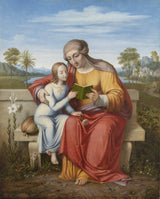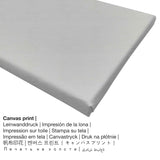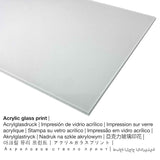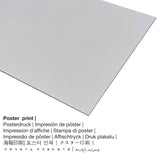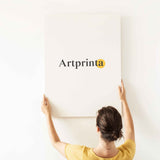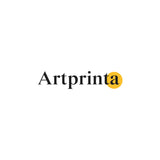J.L. Lund, 1818 - St Anne na-akụziri nwa agbọghọ na-amaghị nwoke ịgụ ihe - mbipụta nka mara mma
Ụtụ gụnyere. Mbupu gbakọrọ na ndenye ọpụpụ.
Ihe osise St Anne teaching the Virgin to read kere site JL Lund dị ka ihe osise ọhụrụ gị
na 1818 JL Lund made the work of art. The beyond 200 year old original was painted with the following size: 41,2 x 32,7 cm. Mmanụ na osisi was applied by the European painter as the medium of the work of art. It belongs to the collection of Ụlọ ihe ngosi nka Thorvaldsens, which is a single-artist museum dedicated to the art of Danish neoclassicistic sculptor Bertel Thorvaldsen. We are delighted to reference that this public domain artpiece is being provided, courtesy of J.L. Lund, St Anne teaching the Virgin to read, 1818, Thorvaldsens Museum, www.thorvaldsensmuseum.dk.Furthermore, the artwork has the creditline: . On top of that, alignment is in Eserese format ya na oke nke 1: 1.2, nke pụtara na ogologo bụ 20% mkpụmkpụ karịa obosara.
Nkọwa ihe osise izizi sitere na webụsaịtị ihe ngosi nka (© Nwebiisinka - Thorvaldsens Museum - Ụlọ ihe ngosi nka Thorvaldsens)
Lund came to Rome in 1802 after first training in the academies in Copenhagen and Dresden and finally under David at Paris. In Rome, he joined the prolific group of artists around Thorvaldsen and the poet Friederike Brun. He knew Friederike Brun from Denmark, where he had given her children instruction in drawing. During the final months of her visit to Rome in 1810, Friederike Brun had the recently arrived Nazarenes – Overbeck (whose parents she knew from Lübeck), Pforr, Vogel and Hottinger – living at her home, and there Lund met them before moving back north with Mrs Brun. Lund hoped to become a professor in the Academy at Copenhagen. However, he was not at first successful in this, and in 1816 he returned to Rome. During the years that had now elapsed, the Nazarenes had established themselves. Their art had found its characteristic expression, and despite his neo-classical background, Lund was very open to the new trends. The painting of St Ann and the little Mary – Nazarene by virtue of its tender feeling and its early Renaissance style – is thought to have been painted in 1818 on the basis of a sketch of Friederike Brun and her foster daughter Emilia Maria Zoëga. 1818 was also the year in which Lund and Eckersberg were appointed professors in Copenhagen. Eckersberg was of great art-historical importance as the teacher of the most important of the artists who came to characterise the Golden Age. But by virtue of his international outlook and good contacts to the Nazarenes, Lund also played a part.
Nkọwapụta nka nka
| Aha nke eserese ahụ: | "St Anne teaching the Virgin to read" |
| Nhazi nke ihe nka: | sere |
| Okwu nche anwụ: | nkà nke oge a |
| oge: | 19th narị afọ |
| Year: | 1818 |
| Afọ nka: | ihe karịrị afọ 200 |
| Ihe osise izizi: | mmanụ n'elu osisi |
| Nha izizi: | 41,2 x 32,7 cm |
| Ụlọ ihe ngosi nka / mkpokọta: | Ụlọ ihe ngosi nka Thorvaldsens |
| Ebe ngosi nka: | Copenhagen, Denmark |
| ibe weebụ nke Museum: | Ụlọ ihe ngosi nka Thorvaldsens |
| Akwụkwọ ikike nka: | ngalaba ọha |
| Site n'aka: | J.L. Lund, St Anne teaching the Virgin to read, 1818, Thorvaldsens Museum, www.thorvaldsensmuseum.dk |
Tebụl onye na-ese ihe
| Aha onye nka: | JL Lund |
| Obodo onye nka: | Danish |
| Ọrụ: | onye na-ese ihe |
| Mba onye si: | Denmark |
| Otu nka: | omenkà nke oge a |
| Nwụrụ anwụ: | 90 afọ |
| Afọ ọmụmụ: | 1777 |
| Afọ nwụrụ: | 1867 |
Nweta nhọrọ akụrụngwa ịchọrọ
Maka mbipụta nka ọ bụla dị mma anyị na-enye nha na ihe dị iche iche. Ị nwere ike họrọ ihe kacha amasị gị na nha n'etiti nhọrọ ndị a:
- Glass acrylic e biri ebi (nwere ezigbo mkpuchi iko): The print on acrylic glass, which is often described as a fine art print on plexiglass, makes your favorite original artwork into beautiful home décor. Our plexiglass with real glass coating protects your selected art print against light and external influences for decades.
- Kwaaji: The printed canvas, not to be mistaken with a painting on a canvas, is an image printed from an industrial printer. It produces a unique effect of three-dimensionality. Hanging your canvas print: The advantage of canvas prints is that they are relatively low in weight, which implies that it is quite simple to hang the Canvas print without extra wall-mounts. Therefore, canvas prints are suited for any kind of wall.
- Aluminom ihe eji eme ihe: This is a metal print made on aluminium dibond with an outstanding depth effect. Its non-reflective surface structure creates a fashionable look. The Direct Print on Aluminum Dibond is your best introduction to fine prints with aluminum. The white and bright parts of the work of art shine with a silky gloss, however without the glare.
- Mpempe akwụkwọ (ihe kwaaji): The poster print is a UV printed canvas with a slight texture on the surface. The poster is particularly suited for placing the art replica using a special frame. Please bear in mind, that depending on the size of the poster we add a white margin of something between 2-6cm around the print motif in order to facilitate the framing.
Ozi ederede
| Nkewa ngwaahịa: | nka nka |
| Mmeputakwa: | dijitalụ mmeputakwa |
| Produzọ mmepụta: | Mbipụta UV / dijitalụ |
| Ihe ngosi: | emepụtara na Germany |
| Stockdị ngwaahịa: | mmepụta ihe na-achọ |
| Ojiji ngwaahịa: | nchịkọta nka (mmeputakwa), foto mgbidi |
| Nhazi: | nhazi ihe osise |
| Oke akụkụ onyonyo: | ogologo ruo obosara 1: 1.2 |
| Mmetụta nke akụkụ akụkụ: | ogologo bụ 20% mkpụmkpụ karịa obosara |
| Akụrụngwa ị nwere ike ịhọrọ: | mbipụta akwụkwọ mmado (akwụkwọ kwaaji), mbipụta kanvas, mbipụta enyo acrylic (nwere ezigbo mkpuchi iko), mbipụta ọla (aluminium dibbond) |
| Nhọrọ nke Canvas Mbipụta (akwa akwa na etiti ihe ndọtị): | 50x60cm - 20x24", 100x120cm - 39x47", 150x180cm - 59x71" |
| Mbipụta iko acrylic (nwere ezigbo mkpuchi iko) nhọrọ nha: | 50x60cm - 20x24", 100x120cm - 39x47" |
| Mbipụta akwụkwọ mmado (akwụkwọ kwaaji): | 50x60cm - 20x24", 100x120cm - 39x47" |
| Mpempe akwụkwọ Dibony (ihe alumnium) nha: | 50x60cm - 20x24", 100x120cm - 39x47" |
| Nhazi nke nka nka: | biko buru n'uche na ebipụta nka enweghi fremu |
Ederede iwu dị mkpa: We try everythig possible to depict our art products as closely as possible and to illustrate them visually on the product detail pages. Although, the pigments of the print products and the printing may vary slightly from the presentation on your monitor. Depending on the settings of your screen and the nature of the surface, not all colors are printed as exactly as the digital version. Considering that our art prints are printed and processed by hand, there may also be minor deviations in the motif's size and exact position.
© nwebiisinka site na - Artprinta (www.artprinta.com)

